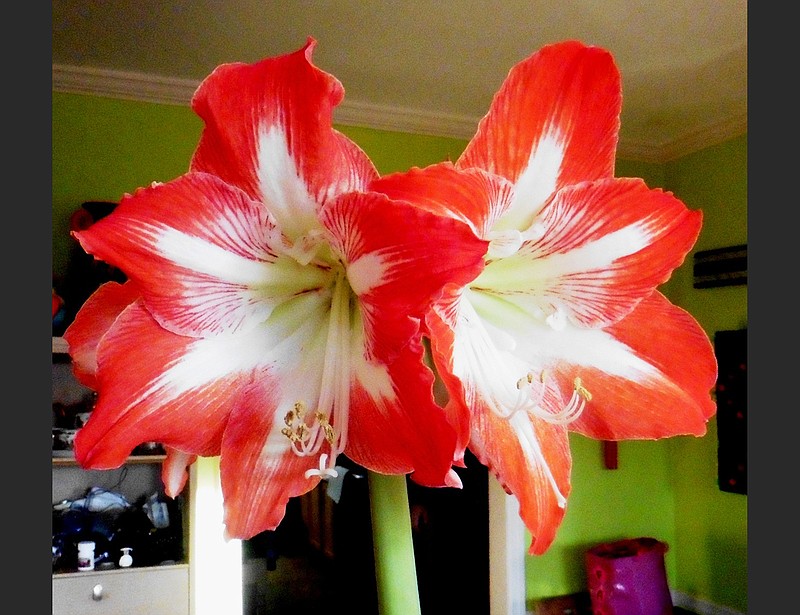Q: I had my first amaryllis bulb this year and was so amazed by the flowers. Who knew that one bulb could produce something so spectacular. Now that it has finished flowering, I cut the tops back, but what do I do with the bulb? Put it in a cool, dry spot until next year? I want to do the right thing because I want more flowers like this year.
A: Amaryllis bulbs produce some of the largest, showiest blooms of any bulb out there, but they are not treated like spring-flowering bulbs. While you can cut the bloom stalk off after flowering, you want the foliage to continue to grow from now through fall to manufacture food to produce more blooms next year. Hopefully, your bulb will resprout some foliage. Give it plenty of sunlight, even moisture and let it grow indoors until all chances of frost have passed. Then you can move the bulb outside in a container or plant it in the ground. Some gardeners have been leaving them outdoors year-round, but if you want showy blooms indoors next winter, lift the bulbs or bring the pots inside in the fall before a killing frost. Then cut the foliage off and let them remain dormant until you see new signs of life appearing. Then you start the process all over again.
■ ■ ■
Q: I know that everyone keeps telling people to wait until spring to look for damage, but I am too old to wait on my huge gardenias' being huge again. They look totally dead, and I want to pull them up and replant. What is the best time to replant?
A: I think you could do both — cut back the damaged plants once they begin to grow, and plant some new ones nearby. But of course, it is your decision. I would not plant any new gardenias until winter has passed. April to early May would be ideal.
■ ■ ■
Q: I would like to know if there will be a 2023 Garden Show this year. I certainly hope so. I really miss them.
A: The Arkansas Flower & Garden Show shut down for good at the end of 2021. The show was a wonderful three-day gardening extravaganza, but it had struggled to make money the last few years it was held. Another group may decide to do another show, but for now, the AFGS is over.
■ ■ ■
Q: My husband was wondering if he could put out Roundup on our Zoysia grass lawn now to kill the weeds that have come up so far this winter. The grass is totally dormant, so Roundup shouldn't hurt it but should kill the weeds — correct?
A: No! Roundup could do damage even to dormant Zoysia grass. Zoysia grass looks the most dormant during the winter of almost any lawn grass we grow, but if you got down close and looked, it should have some green near the soil line. The only grass that Roundup can ever be applied to in the dormant stage is Bermuda, and then only when it is totally dormant. If you have broadleaf weeds now, consider using a product containing 2, 4-D.
■ ■ ■
Q: I was surprised to see my forsythia bushes in bloom this past week. Who knows what this recent ice will do to the flowers, but they are almost all just at the top. I seem to recall your saying something about pruning that would give me more blooms. But what you said, I have forgotten. When and how do I prune to get more flowers? Thanks.
A: Forsythia bushes produce the flower buds on the growth they put on the season before. If you never prune your forsythia, they don't grow as much, so most of the flowers end up being on the tips of the old canes or branches. Once flowering is complete in the spring, cut out a third of the older, woodier branches (canes) to the soil line. This will encourage new canes that will sprout up and should have blooms from top to bottom. To have more flowers, remove a third of the oldest canes each year to keep rejuvenating the bushes.
Retired after 38 years with the University of Arkansas Cooperative Extension Service, Janet Carson ranks among Arkansas' best known horticulture experts. Her blog is at arkansasonline.com/planitjanet. Write to her at P.O. Box 2221, Little Rock, AR 72203 or email [email protected]

